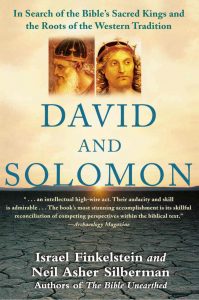A disciplina Pentateuco é estudada no segundo semestre do primeiro ano, com carga horária de 4 horas semanais. Tempo que atualmente se tornou curto, pois há uma profunda crise nesta área de estudos, muito semelhante à crise da História de Israel. A teoria clássica das fontes JEDP do Pentateuco, elaborada no século XIX por Hupfeld, Kuenen, Reuss, Graf e, especialmente, Wellhausen, vem sofrendo, desde meados da década de 70 do século XX, sérios abalos, de forma que hoje muitos pesquisadores consideram impossível assumir, sem mais, este modelo como ponto de partida. O consenso wellhauseniano foi rompido, contudo, ainda não se conseguiu um novo consenso e muitas são as propostas hoje existentes para explicar a origem e a formação do Pentateuco.
I. Ementa
Oferece ao aluno um panorama da pesquisa exegética na área da formação e composição dos cinco primeiros livros da Bíblia e estuda os seus principais textos.
II. Objetivos
Familiariza o aluno com as tradições históricas de Israel e com as mais recentes pesquisas na área do Pentateuco para que o uso do texto na prática pastoral possa ser feito de forma consciente.
III. Conteúdo Programático
1. A redação do Pentateuco em três tempos
2. Novos paradigmas no estudo do Pentateuco
3. O Decálogo: Ex 20,1-17 e Dt 5,6-21
4. Códigos do Antigo Oriente Médio
5. O Código da Aliança: Ex 20,22-23,19
6. A criação: Gn 1,1-2,4a e Gn 2,4b-25
7. O pecado em quatro quadros: Gn 3,1-24
8. Caim e Abel: Gn 4,1-26
9. Patriarcas pré-diluvianos – de Adão a Noé: Gn 5,1-28.30-32
10. O dilúvio: Gn 6,5-9,19
11. A cidade e a torre de Babel: Gn 11,1-9
12. As tradições patriarcais: Gn 11,27-37,1
13. A história de José: Gn 37,5-50,26
14. O êxodo do Egito: Ex 1-15
IV. Bibliografia
Básica
DA SILVA, A. J. O pentateuco e a história de Israel. In: Teologia na pós-modernidade: abordagens epistemológica, sistemática e teórico-prática. São Paulo: Paulinas, 2003. p. 173-215.
DE PURY, A. (org.) O Pentateuco em questão: as origens e a composição dos cinco primeiros livros da Bíblia à luz das pesquisas recentes. 2. ed. Petrópolis: Vozes, 2002.
GARCÍA LÓPEZ, F. O Pentateuco. São Paulo: Ave-Maria, 2004.
GRUEN, W. et al. Os dez mandamentos: várias leituras 2. ed. Estudos Bíblicos, Petrópolis, n. 9, 1987.
MESTERS, C. Paraíso terrestre: saudade ou esperança? 17. ed. Petrópolis: Vozes, 2001.
SCHWANTES, M. et al. A memória popular do êxodo. 2. ed. Estudos Bíblicos, Petrópolis, n. 16, 1996.
SKA, J.-L. Introdução à leitura do Pentateuco: chaves para a interpretação dos cinco primeiros livros da Bíblia. São Paulo: Loyola, 2003. Resenha disponível na Ayrton’s Biblical Page > Ler o Pentateuco.
Complementar
BRIEND, J. (org.) A criação e o dilúvio segundo os textos do Oriente Médio Antigo 2. ed. São Paulo: Paulus, 1990.
BOUZON, E. Uma coleção de direito babilônico pré-hammurabiano: leis do reino de Eshnunna. Petrópolis: Vozes, 2001.
BOUZON, E. O Código de Hammurabi. 10. ed. Petrópolis: Vozes, 2003.
CRÜSEMANN, F. A Torá: teologia e história social da lei do Antigo Testamento. 2. ed. Petrópolis: Vozes, 2002.
GARCÍA LÓPEZ, F. O decálogo. São Paulo: Paulus, 1997.
GERSTENBERGER, E. et al. A Lei. Estudos Bíblicos, Petrópolis, n. 51, 1996.
GERTZ, J. C.; SCHMID, K.; WITTE, M. (eds.) Abschied vom Jahwisten: Die Komposition des Hexateuch in der jüngsten Diskussion. Berlin: Walter de Gruyter, 2002.
MESTERS, C. Bíblia, livro da aliança. 6. ed. São Paulo: Paulus, 1997.
SCHWANTES, M. Projetos de esperança: meditações sobre Gênesis 1-11. São Paulo: Paulinas, 2002.
SCHWANTES, M. et al. Pentateuco. RIBLA, Petrópolis/São Leopoldo, n. 23, 1996/1.
SPARKS, K. L. The Pentateuch: An Annotated Bibliography. Grand Rapids: Baker, 2002.
STORNIOLO, I. Mandamentos, ontem e hoje (Entrevista com Pe. Ivo Storniolo). Vida Pastoral, São Paulo, n. 149, pp. 27-29, nov./dez. 1989.
STORNIOLO, I. Como ler o livro do Levítico: a formação de um povo santo. 3. ed. São Paulo: Paulus, 1997.
STORNIOLO, I. A cidade e sua torre: bênção ou castigo? Vida Pastoral, São Paulo, n. 152 , p. 2-7, maio/junho 1990.
VAN SETERS, J. The Pentateuch: A Social-Science Commentary. Sheffield: Sheffield Academic Press, 1999.
WATTS, J. W. ( ed.) Persia and Torah: The Theory of Imperial Authorization of the Pentateuch. Atlanta: Society of Biblical Literature, 2001.

